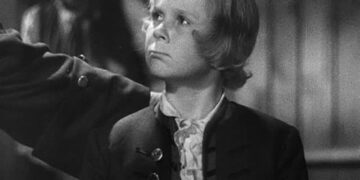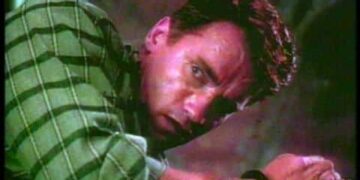Maborosi, a 1995 film directed by Kore-eda Hirokazu and based on the book by Teru Miyamoto, is a profound exploration of grief, loss, and the human quest for understanding. The film’s narrative, rich in symbolism, is centered around the life of Yumiko, a young woman grappling with the unexplained suicide of her husband.
The film’s poetic depiction of human emotion and its masterful use of cinematography have earned it a special place in the annals of Japanese cinema.
As an experienced film and literature enthusiast, I can confidently say that Maborosi is a masterpiece that deserves thorough examination. The film’s depth and complexity make it a fascinating subject for discussion and analysis.
It is a beautiful blend of literature and cinema that transcends the boundaries of conventional storytelling.
In this article, I will provide a comprehensive book summary of Maborosi, delve into character analysis, explore the film’s unique curiosities, and much more.
So, whether you’re a fan of the film, a curious reader, or someone interested in understanding the finer nuances of this masterpiece, this article is for you.
A comprehensive summary of Maborosi
The story of Maborosi begins with Yumiko, a young woman dealing with the tragic loss of her husband, Ikuo. His sudden suicide leaves her bewildered and filled with a sense of guilt, as she constantly revisits the past trying to identify any signs she might have missed.
The narrative then takes us through Yumiko’s journey as she attempts to rebuild her life, moving from the city to a remote seaside village after marrying a widower named Tamio.
The story is not so much about the events that unfold, but rather about Yumiko’s internal journey through grief and self-discovery.
It is a beautiful, albeit haunting, exploration of the human condition, the impermanence of life, and the struggle to find meaning amidst loss.The film’s portrayal of Yumiko’s journey is a poignant exploration of grief and healing.
It’s a narrative that draws you in with its simplicity, yet leaves you pondering the profound questions it raises about life, death, and our place in the universe.
Character analysis in Maborosi
Maborosi is a character-driven narrative, with each character carrying a unique depth and complexity. Yumiko, the protagonist, is a character marked by her resilience and her struggle to make sense of her husband’s unexplained suicide.
Her journey is a testament to the human spirit’s ability to endure, adapt, and find peace amidst life’s most challenging circumstances.
Ikuo, Yumiko’s first husband, is a character who, despite his untimely death, continues to exert a profound influence on Yumiko’s life. His absence becomes a constant presence in Yumiko’s life, shaping her actions and decisions.
Tamio, Yumiko’s second husband, is a character who reflects the themes of acceptance and healing.
He is a widower who understands Yumiko’s grief, and through their shared experiences, they find a sense of camaraderie and solace.
Together, these characters paint a compelling picture of the human experience, reflecting our shared struggles, hopes, and triumphs.
Parent guide: What you need to know about Maborosi
For parents considering whether Maborosi is appropriate for their children, it’s important to note that the film delves into sensitive subjects such as death, loss, and grief.
It’s a deeply introspective and poignant narrative that might be challenging for younger viewers to comprehend.
However, Maborosi also provides an invaluable opportunity to engage in meaningful conversations about these themes with your children.
The film’s exploration of grief can open avenues for discussing the impermanence of life and the importance of resilience.
While there are no explicit scenes of violence or sexual content, the film’s emotional intensity and mature themes suggest it is suited for older teenagers and adults.
When and where Maborosi takes place: The film locations
Maborosi is set in Japan, moving from the bustling cityscape of Osaka to the serene seaside village of Noto.
The contrast between these locations plays a significant role in the narrative, reflecting Yumiko’s journey from a life marked by turmoil to one of relative peace and simplicity.
Osaka, with its crowded streets and neon lights, is a stark contrast to the tranquil beauty of Noto.
This shift in setting underpins Yumiko’s transition from a life haunted by her husband’s death to one where she finds a semblance of peace and stability.
Who’s who in Maborosi: A comprehensive list
The cast of Maborosi brings together a host of talented actors who breathe life into their respective characters. Makiko Esumi delivers a powerful performance as Yumiko, the film’s protagonist.
She is joined by Takashi Naito, who plays Ikuo, Yumiko’s first husband, and Tadanobu Asano, who plays Tamio, Yumiko’s second husband.
The supporting cast includes Akira Emoto, who plays Tamio’s father, and Mutsuko Sakura, who plays Yumiko’s grandmother.
Their performances add depth to the narrative, contributing to the film’s overall impact.
Memorable quotes from Maborosi
Maborosi is a film rich in poignant dialogue that resonates with viewers long after the credits roll.
One notable quote from Yumiko, “I sometimes think that nothing ever dies,” reflects the film’s exploration of life, death, and the enduring nature of human spirit.
Another memorable quote is Ikuo’s “I’ll always be with you,” a promise that becomes a haunting reminder of his presence in Yumiko’s life even after his death.
The soundtrack of Maborosi by Ming-chang Chen
The soundtrack of Maborosi, composed by Ming-chang Chen, is an integral part of the film’s narrative.
The music complements the film’s visual storytelling, enhancing the emotional depth and mood of each scene.
The soundtrack’s minimalist composition reflects the film’s quiet introspection, allowing viewers to fully immerse themselves in the narrative.
Each note resonates with the film’s themes, creating a beautiful harmony between the visual and auditory elements of the film.
Unveiling the curiosities of Maborosi
Maborosi, like any great work of art, is filled with intriguing curiosities that add to its allure. One such curiosity is the film’s title, Maborosi, which translates to “phantom light” or “mirage.”
This title reflects the film’s exploration of elusive truths and the human quest for understanding.
Another curiosity is the film’s use of light and shadow, which plays a significant role in the narrative.
The contrasting images of light and darkness symbolize life and death, hope and despair, creating a visual metaphor for Yumiko’s journey.
Tips for Maborosi cosplay: Dressing like your favorite characters
For fans interested in cosplaying as their favorite characters from Maborosi, here are a few tips. Yumiko’s character is often seen in simple, traditional Japanese clothing. A kimono or yukata, preferably in muted colors, would be a fitting choice for her character.
Ikuo, on the other hand, is depicted as a typical city dweller. His attire consists of casual, contemporary clothing, making it relatively easy for anyone to replicate.
Tamio, being a fisherman, is often seen in work clothes. An old shirt, jeans, and a fishing hat could help you capture his character’s essence.
Remember, cosplay isn’t just about the clothes. It’s also about embodying the character’s spirit and personality, so do take time to understand and connect with the character you choose.
Teru Miyamoto: The author behind Maborosi
Teru Miyamoto, the author of the book that inspired Maborosi, is a renowned Japanese writer known for his poignant exploration of human emotions.
His works often delve into themes of life, death, and the human condition, making him one of Japan’s most respected contemporary authors.
Miyamoto’s storytelling prowess is evident in Maborosi, where he paints a vivid picture of human resilience and the quest for meaning amidst loss. His ability to explore complex emotions with sensitivity and depth has earned him a special place in the hearts of readers worldwide.
The ending of Maborosi explained
The ending of Maborosi is open to interpretation, leaving viewers with more questions than answers.
Yumiko’s journey ends not with a definitive resolution, but with a sense of acceptance and peace.
In the final scenes, we see Yumiko walking along the beach, reflecting on her life and losses. This scene, much like the rest of the film, is a poetic exploration of the human condition, leaving viewers to grapple with their interpretations of Yumiko’s journey.
Possible Maborosi remake, sequel, and spin-off
Given the critical acclaim and enduring popularity of Maborosi, it’s not surprising that there’s been speculation about a possible remake, sequel, or spin-off.
While there’s currently no official news on this front, the film’s timeless appeal makes it a promising candidate for future adaptations.
A remake could offer a fresh perspective on the original narrative, while a sequel or spin-off could explore the lives of other characters or delve deeper into Yumiko’s journey. Regardless of the form it takes, any new adaptation of Maborosi is sure to be a treat for fans.
Other notable works by Kore-eda Hirokazu
Kore-eda Hirokazu, the director of Maborosi, is a master filmmaker known for his humanistic approach to storytelling. His filmography includes a host of critically acclaimed films such as “Nobody Knows,” “Still Walking,” and “Shoplifters.”
Each of these films, like Maborosi, is a profound exploration of human emotions and experiences. Whether it’s the story of abandoned children in “Nobody Knows,” a family reunion in “Still Walking,” or an unconventional family in “Shoplifters,” Kore-eda’s films are a testament to his storytelling prowess and his insightful exploration of the human condition.
Media similar to Maborosi: What to watch/read next
If you enjoyed Maborosi and are looking for similar media to explore, here are a few recommendations. “Tokyo Story,” directed by YasujirÅ Ozu, is a classic Japanese film that explores family dynamics and the passage of time, much like Maborosi.
In terms of books, Haruki Murakami’s “Norwegian Wood” shares Maborosi’s themes of love, loss, and the human quest for understanding. Similarly, “The Housekeeper and the Professor” by YÅko Ogawa is a poignant exploration of memory, love, and the bonds that connect us.
Exploring the works of Teru Miyamoto
For fans of Maborosi interested in delving deeper into Teru Miyamoto’s works, there’s a wealth of literature to explore.
His novel “Kinshu: Autumn Brocade” is a beautiful exploration of love, loss, and redemption, while “The Bear and the Paving Stone” delves into themes of friendship and the passage of time.
Each of Miyamoto’s works is a testament to his storytelling prowess and his insightful exploration of the human condition. His ability to weave complex emotions into compelling narratives makes him a must-read author for any literature enthusiast.
Book club questions for Maborosi
Discussing Maborosi in a book club can be a rewarding experience, fostering insightful conversations about life, death, and the human condition.
Here are a few questions to guide your discussion: How does Maborosi explore the theme of grief and loss? How do the characters’ experiences reflect on the human condition? How does the setting contribute to the narrative? How does the film’s use of light and shadow enhance its themes?
Video games inspired by Maborosi
While there are currently no video games directly inspired by Maborosi, the film’s themes of loss, grief, and the human quest for understanding resonate with many narrative-driven games.
Games like “What Remains of Edith Finch” and “Gris” explore similar themes, offering players a deeply emotional and immersive experience.
Travel guide: Visiting the filming locations of Maborosi
For fans interested in visiting the filming locations of Maborosi, a trip to Japan is in order. Start your journey in Osaka, where you can explore the city’s vibrant streets and get a taste of urban Japanese life.
Then, make your way to the serene coastal town of Noto, where you can immerse yourself in the film’s picturesque setting.
Conclusion
Maborosi is more than just a film or a book; it’s a profound exploration of the human condition, a poignant journey through grief and healing.
Whether you’re a fan of the film, a curious reader, or someone interested in understanding the finer nuances of this masterpiece, I hope this comprehensive guide has deepened your understanding and appreciation of Maborosi.
As we delve into the world of Maborosi, we’re not just exploring a story; we’re engaging with questions about life, death, and our place in the universe.
It’s a journey that, much like Yumiko’s, leaves us with a greater understanding of ourselves and the world around us.













